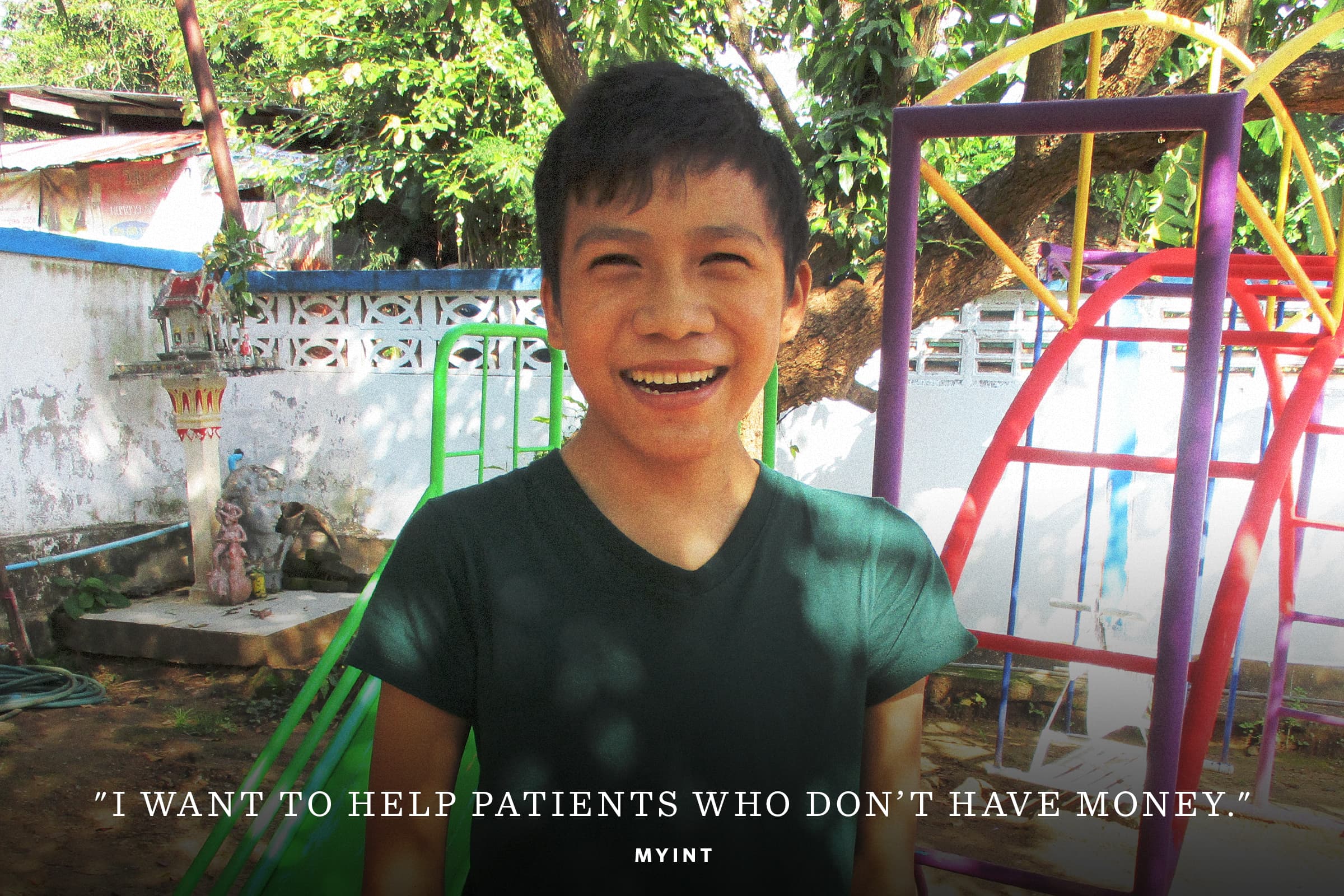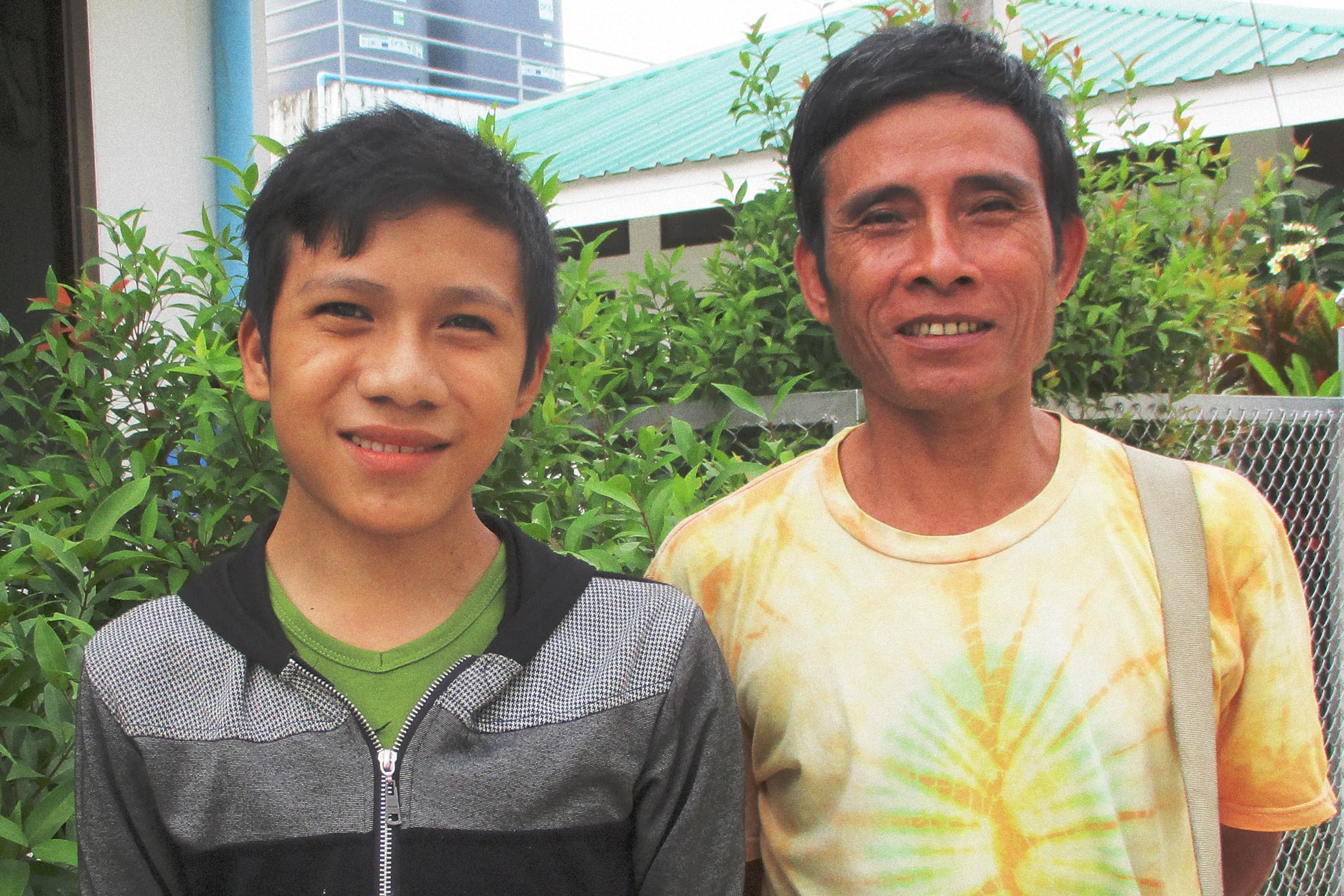When Myint was two months old, his fingertips turned blue. His concerned parents tried to improve his health with Burmese traditional medicine, but his symptoms only worsened. As a result, Myint grew up too weak to climb stairs or walk longer than five minutes. In their rural village, his mother carried him to and from school for seven years until he became too feeble to continue his education.
Myint was born with two heart defects—tetralogy of Fallot and dextrocardia. His heart was positioned incorrectly and weakened by an abnormal aorta, a hole between its chambers, and an obstructed connection to his lungs.

Paradoxically, despite the medical complexity of Myint’s condition, his biggest barrier to health wasn’t the intricate surgery he needed. It was the journey he took to get to the operating room in the first place.
Myint’s story makes evident that the stories we share on Watsi are only snapshots of the immense journeys patients take before ever being posted on our site. Myint’s path spanned over a decade and involved a struggle to stay in school, a chance encounter with a traveling medic, hundreds of miles of traveled, and his first trip to a foreign country. He eventually underwent life-changing heart surgery, but only after a journey to health that many of us cannot imagine.
14 years without hope
Like the majority of the Burmese population, Myint lives in a small, rural village. In communities like his—where home births are common but health facilities are not—congenital health conditions often go undetected.

Myint was born at home with a traditional birth assistant. He immediately showed signs of a congenital heart defect. But while his family knew he was sick, they couldn’t access a definitive diagnosis, let alone treatment, because the income they earned tapping rubber couldn’t pay for advanced health services.
Myint was seven years old by the time he finally saw a doctor. His family’s relief for medical attention was quickly overshadowed by the news the doctor delivered. Myint needed a heart surgery so complex it was unavailable in Burma. His only option was oral medication, which was expensive and non-curative.
“When I heard that there was no treatment, I felt very depressed,” his father later recounted.

With no path out of Burma for treatment, Myint struggled to live a normal life. He excelled at science and English, but at the end of seventh grade, his school barred him from returning because of his health. Without school, his frustration grew. “I am sure I would pass grade eight if the school let me do it,” he later told his medical team.

A chance encounter
In early 2017, a medic from the Mae Tao Clinic crossed paths with Myint. Founded by a Burmese refugee, Mae Tao Clinic is based in Mae Sot, a Thai border town, and has established a medical referral system spanning Burma. They work with an unofficial network of Burmese leaders to identify patients with conditions requiring treatment in Thailand, and coordinate their care by whatever means necessary.
The medic examined Myint and suggested that he cross the Thai-Burma border to visit the Mae Tao Clinic. There, Myint would meet with doctors and medical staff, who would help him access the care he needed in Thailand.

500 miles
Myint’s father borrowed 200,000 Kyat, about $200 USD and the equivalent of two month’s salary, to fund their journey into Thailand. They two took a nine-hour bus ride across 250 miles to reach Mae Sot.

At the Mae Tao Clinic, Myint received the official diagnosis he had been seeking for years. His combination of cardiac defects was causing oxygen-poor blood to flow out of his heart and into the rest of his body. In the United States, surgery to treat his heart conditions is typically performed in the first year of life—Myint had lived with these heart defects for 14 years.
The Mae Tao Clinic arranged for Myint to receive open heart surgery at a major hospital in Chiang Mai, Thailand through their partnership with Burma Children's Medical Fund (BCMF). They posted his story on Watsi for funding, and he joined a bus full of Burmese patients also in need of complex surgery to make another 250-mile journey to Chiang Mai Hospital.

A six-hour surgery completed his journey
When Myint arrived at the hospital in October 2017, it took surgeons six hours to fix his heart. When his father called his mother to tell her his open heart surgery was successful, she cried tears of joy.
Now, Myint’s symptoms have disappeared. “My life will be different now,” he says. “I can go back to school. I want to look after patients as a doctor or a medic. I want to help patients who don’t have money.”

If Myint does fulfill his dream of becoming a doctor, learning how to fix heart defects like the one he had will be challenging. But he knows first-hand that simply connecting patients with healthcare is equally difficult. In the end, it took Myint 14 years, 1,000 miles, the help of a traveling medic, and Watsi donors from around the world to finally complete his journey to health.

Help a Watsi patient complete their journey to health by donating today.
The Watsi Team
Everyone deserves healthcare.